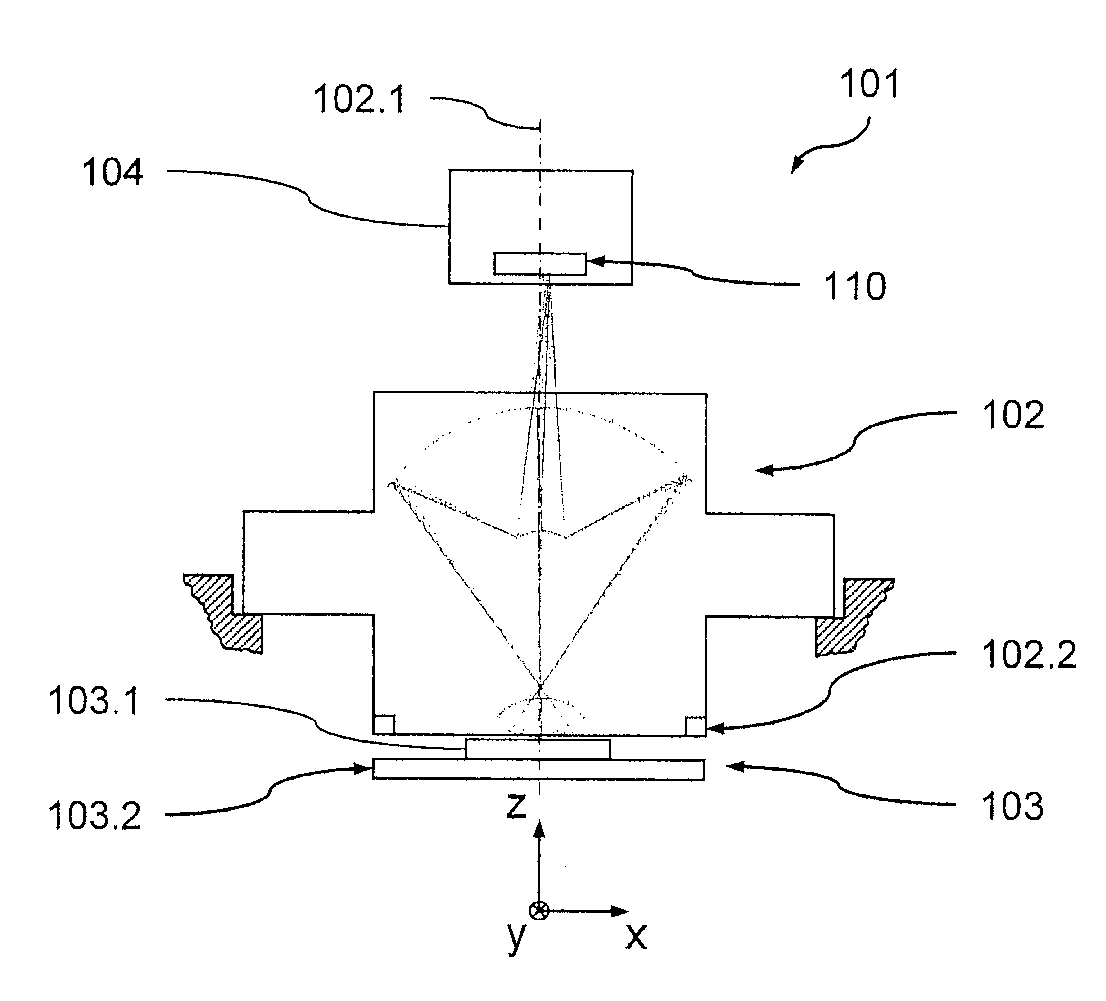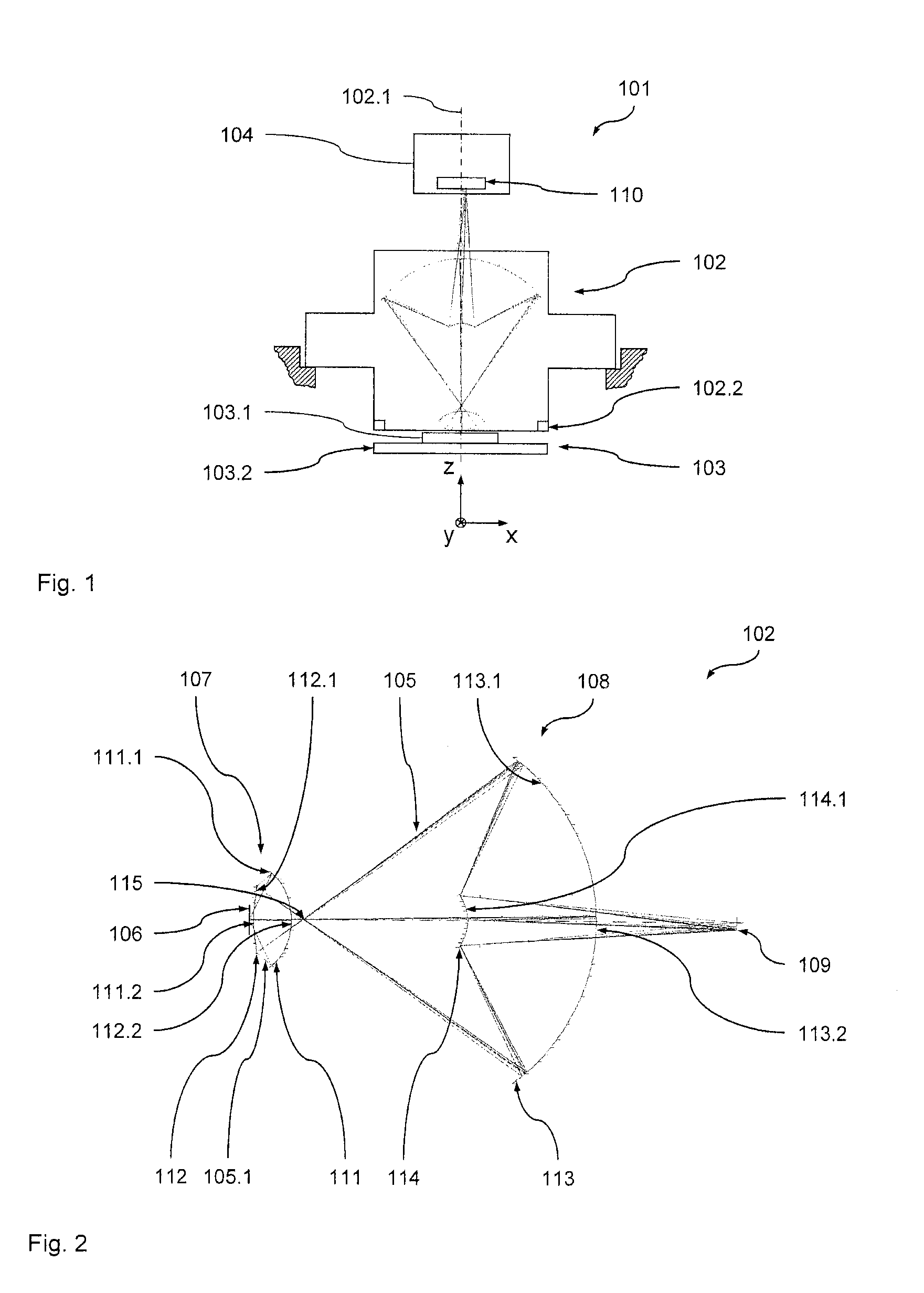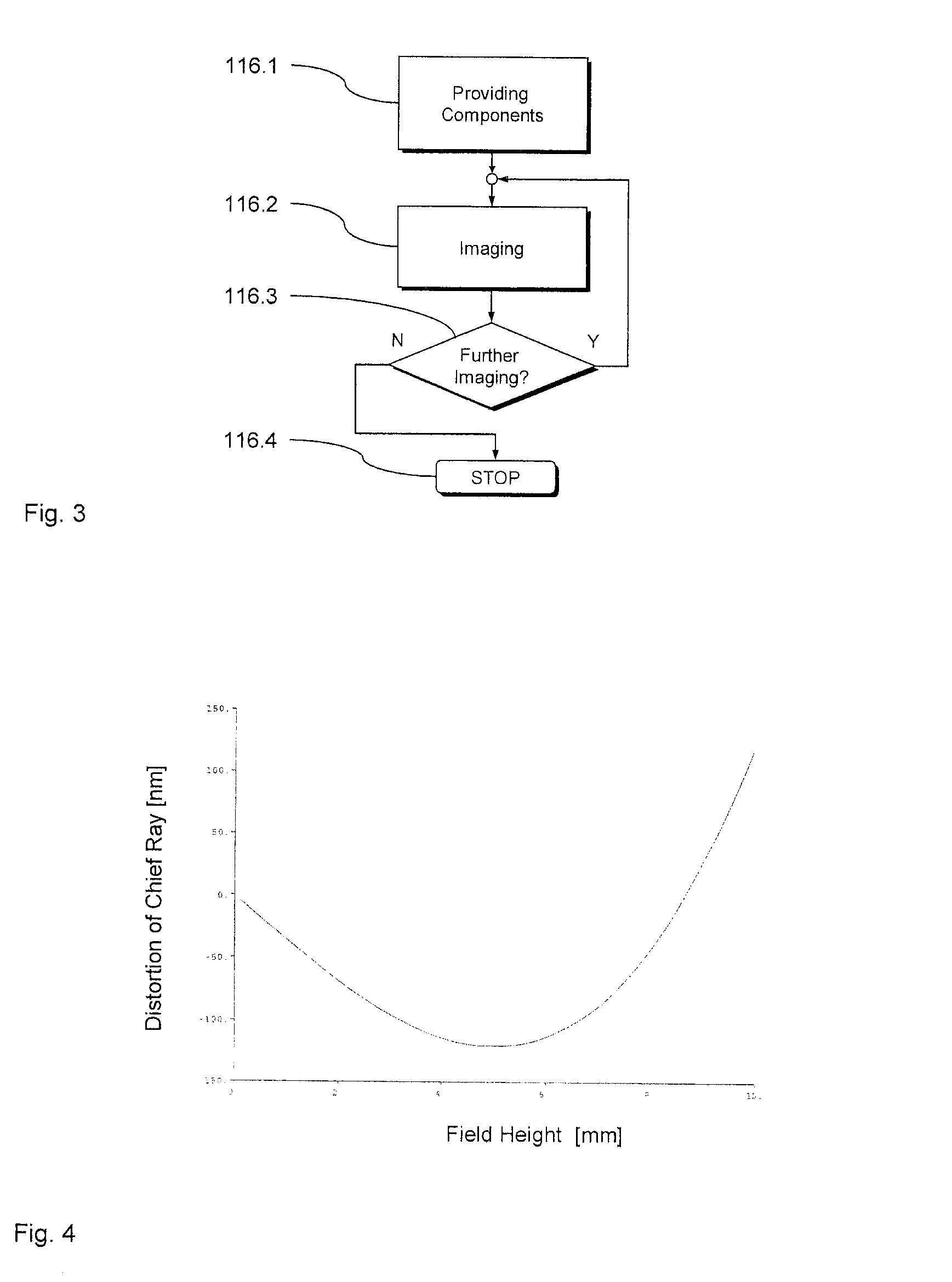Optical imaging device and imaging method for microscopy
a technology of optical imaging and imaging method, which is applied in the field of optical imaging device and imaging method for microscopy, can solve the problems of chromatic aberration, so-called achromatization of such imaging device comprising refractive optical elements, and the elimination of such chromatic aberration, and achieves the effects of low cost, minimum aberration, and high numerical apertur
- Summary
- Abstract
- Description
- Claims
- Application Information
AI Technical Summary
Benefits of technology
Problems solved by technology
Method used
Image
Examples
Embodiment Construction
[0024]With reference to FIGS. 1 to 3, a preferred embodiment of the microscope 101 according to the invention comprising a preferred embodiment of the optical imaging device 102 according to the invention is described below.
[0025]In the present example, the microscope 101 is used to inspect the structures formed on a substrate 103.1 (which were produced, for example, via an optical process). However, with other variants of the invention, the microscope according to the invention can also be used for an imaging process in connection with arbitrary applications, in particular, with the inspection of arbitrary other bodies, substrates, surfaces or fluids etc.
[0026]FIG. 1 shows a schematic representation of the microscope 101 which comprises an optical imaging device in the form of an objective 102 (with an optical axis 102.1 and an illumination system 102.2), a substrate device 103 and an image recording device 104. The illumination system 102.2 illuminates (via a light guide device no...
PUM
 Login to View More
Login to View More Abstract
Description
Claims
Application Information
 Login to View More
Login to View More - R&D
- Intellectual Property
- Life Sciences
- Materials
- Tech Scout
- Unparalleled Data Quality
- Higher Quality Content
- 60% Fewer Hallucinations
Browse by: Latest US Patents, China's latest patents, Technical Efficacy Thesaurus, Application Domain, Technology Topic, Popular Technical Reports.
© 2025 PatSnap. All rights reserved.Legal|Privacy policy|Modern Slavery Act Transparency Statement|Sitemap|About US| Contact US: help@patsnap.com



